Do you hold tension in your shoulders? Who does not have tension on the back, pain on the neck or on the shoulders? Here you have 7 yoga poses for your shoulders. You sit for hours in front of a computer every day? Do you often forget about your posture, and you add tension in your shoulders and chest? Live longer, live healthier, be happier.
If you want to fix your posture, your pain that comes from that natural hunch or from an injury, here you have 7 yoga poses for your shoulders. You will relieve the tension and feel better in no time. These are simple things you can do. Stress and anxiety can be your greatest enemies. These yoga poses will help you. Remember to keep breathing and listen to your body.
Thread the Needle Pose (Urdhva Mukha Pasasana)
It is a simple twist of torso, stretching and contracting the back muscles along with a twist of the head.
Why we do it: This yoga pose will open the shoulders and stretch the whole spine. It is one of the best yoga poses for shoulders. It offers a deep stretch for the shoulders and neck, helping relaxation and pain relief.
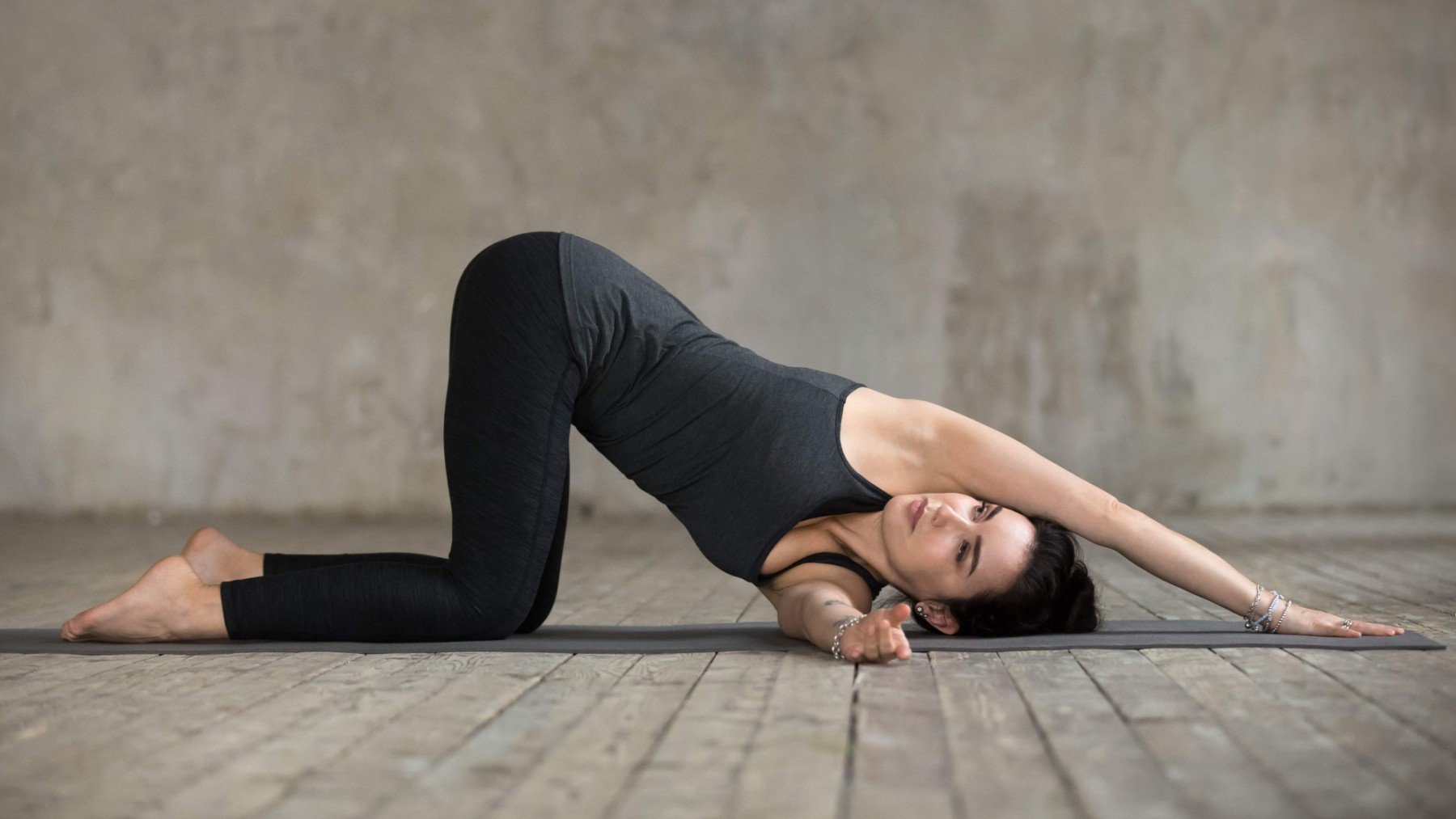
How we do it: Listen to your body, and breathe. Hands and knees on the floor. Tabletop position. Hips above your knees. Wrists are under your shoulders. Inhale. Exhale. Raise your right arm towards the sky. Extend your arm fully and look up to your fingertips. Right arm under your left arm. Left arm forward. Elbow away from the mat. Your right shoulder and cheek should now be on the floor. Turn your upper body to your left. Feel the stretch on the right side of your upper body. Return to the tabletop position. Switch sides.
Gomukhasana (Cow face pose)
This pose stretches your entire body: your shoulders and arms, your ankles, hips, thighs and back.
Why we do it: It is good for your ankles, hips and thighs. It opens your chest and spine. It is good for your shoulders.
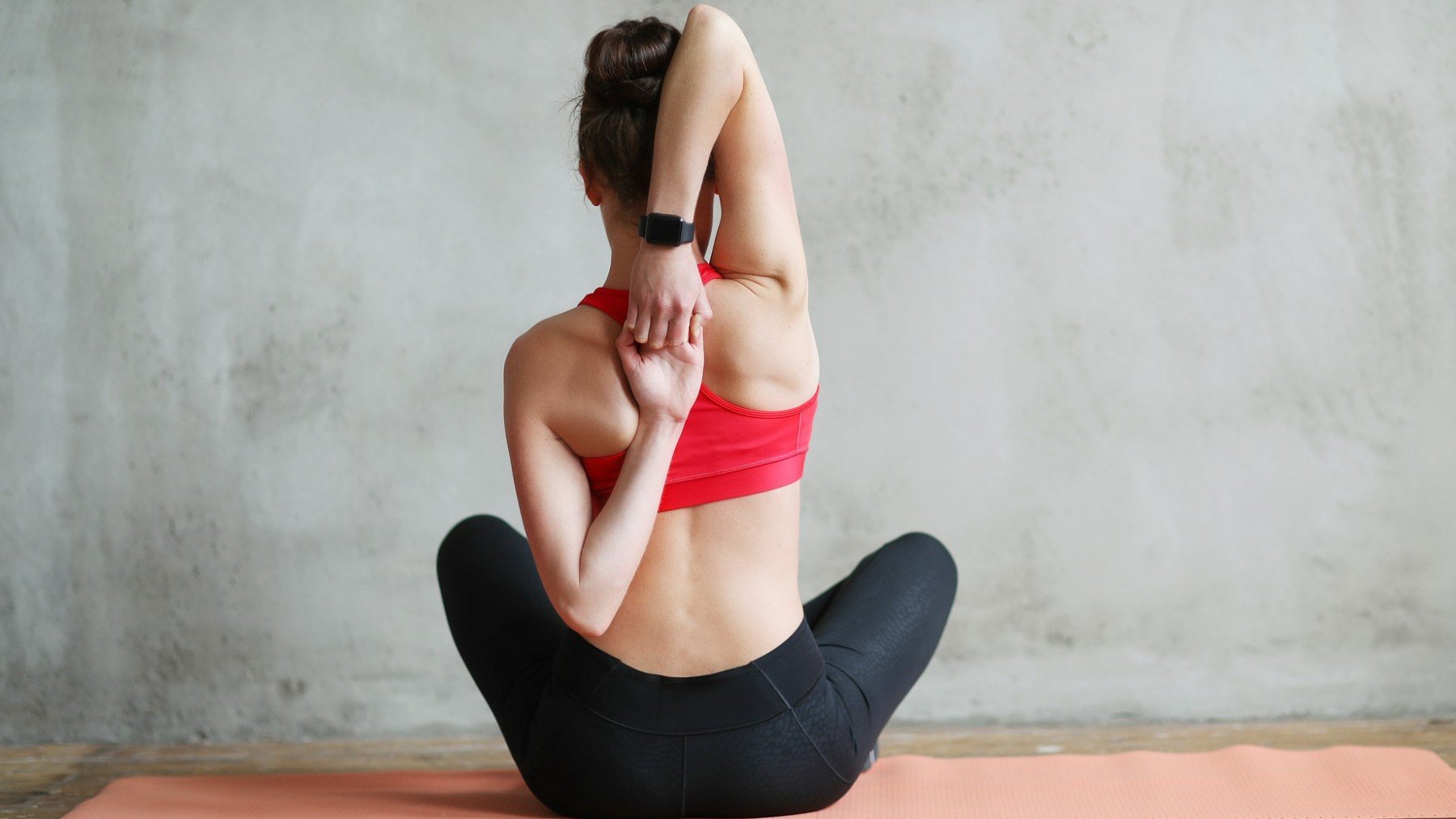
How we do it: Bend the right knee. Bring your left foot to the outside of your right hip. Bring your right foot to the outside of your left hip. Your right knee is stacked on top of your left knee. Ground through your sitting bones. Stretch your arms out to the sides. Palms facing forward. Sweep the right arm behind your back. Walk your hand up between your shoulder blades. Stretch the left arm up. Bend the elbow. Reach down for the right fingertips. Hook the fingers together if they reach. You can use a towel if they do not find each other. Breathe.
Shoulder supported bridge (Setu Bandha Sarvangasana)
This pose is good to relax your body. It is good for the back, the chest and the shoulders.
Why we do it: It is good for the flow of blood to the heart, the glands in the neck and the head. It is a chest opener, it also enables better respiration. It strengthens the shoulders. Furthermore, it tones the thighs, calves, hips and all the leg muscles.
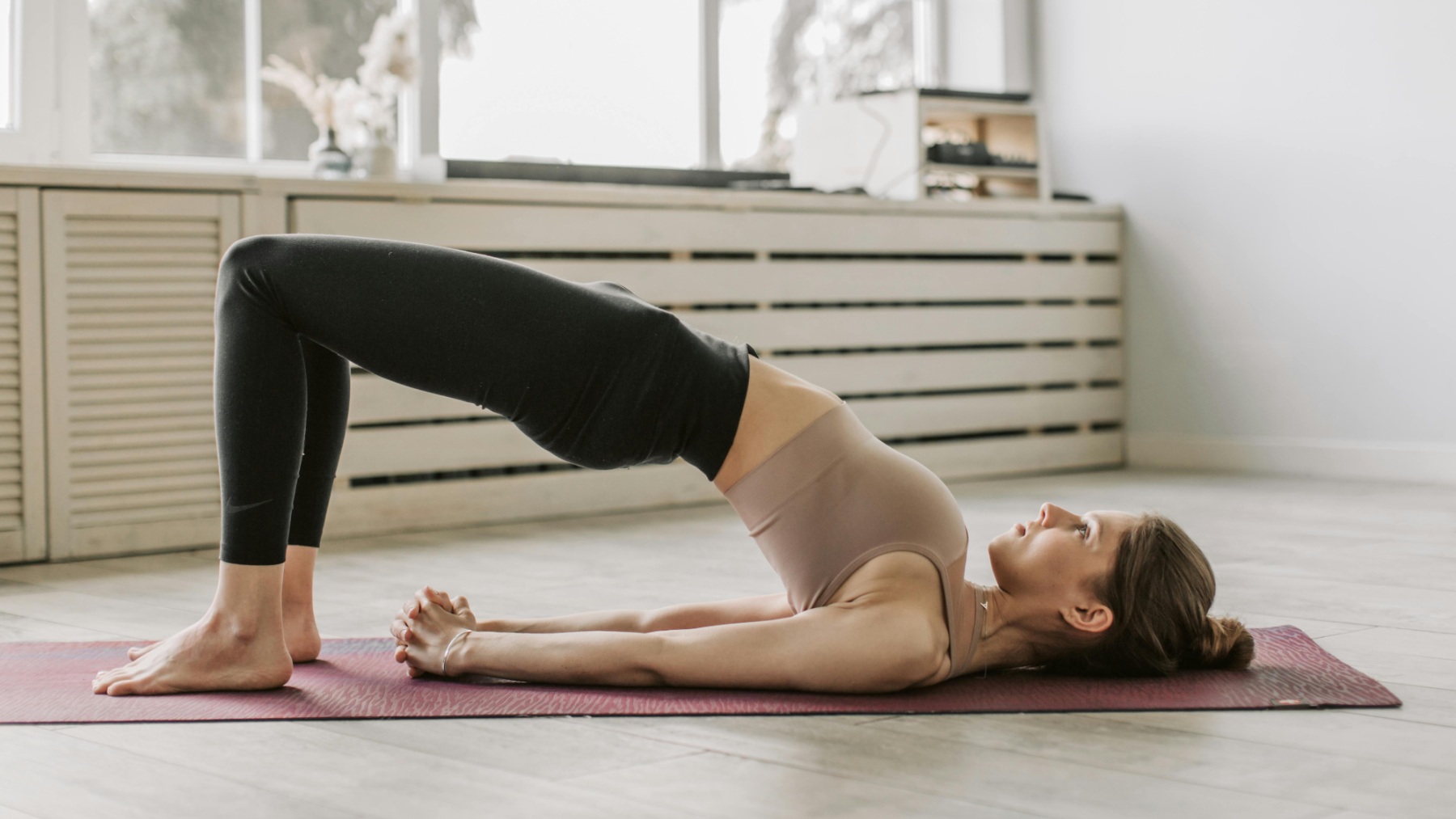
How we do it: Place your palms on your lower ribs. Bend your knees and drop your feet to the ground. Hips high. Keep lifting the hips high and press your chest up and back. Keep the natural curvature of your spine and your eye gaze upward.
Cow Pose (Bitilasana)
This pose is good for the chest. It is good to loosen up your spine and stretch your back body. This pose is paired with Cat Pose. It is considered a beginner move. You can pair it with Cat Pose.
Why we do it: It stretches the front of the torso and neck. It is good for the spine and mobility.
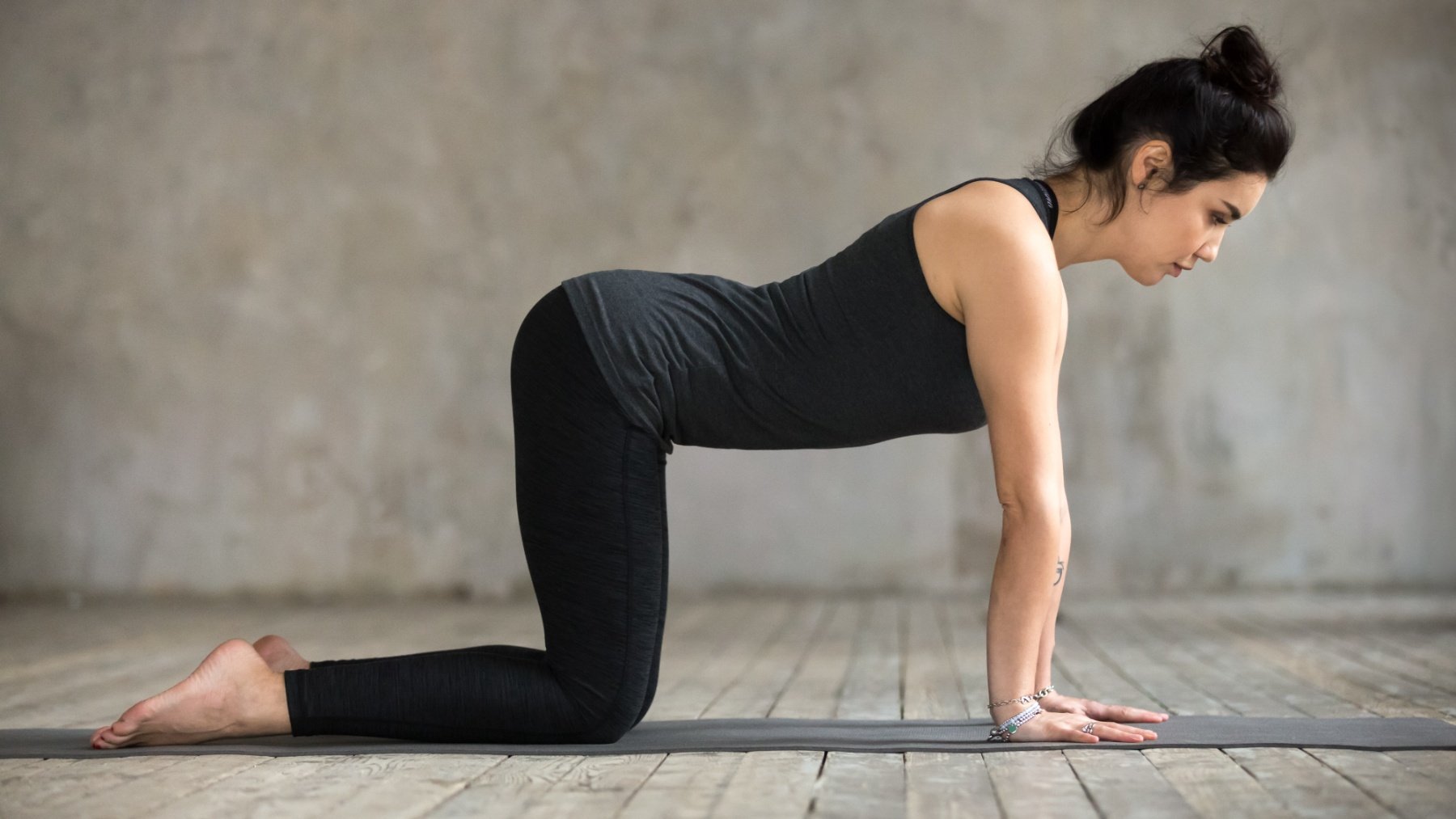
How we do it: Hands and knees on the floor. Keep your hands shoulder-width apart. Your knees should be directly below your hips. Inhale deeply while curving your lower back. Bring your head up, tilting your pelvis up like a cow. Bring your abdomen in. Arch your spine. Head and pelvis down like a cat into Marjaryasana.
Cat Pose (Marjaryasana)
This pose strengthens the muscles, your hands and wrists and shoulders.
Why we do it: This pose is good for your back, shoulders, and hips and stretches your lumbar, thoracic, and cervical spine.
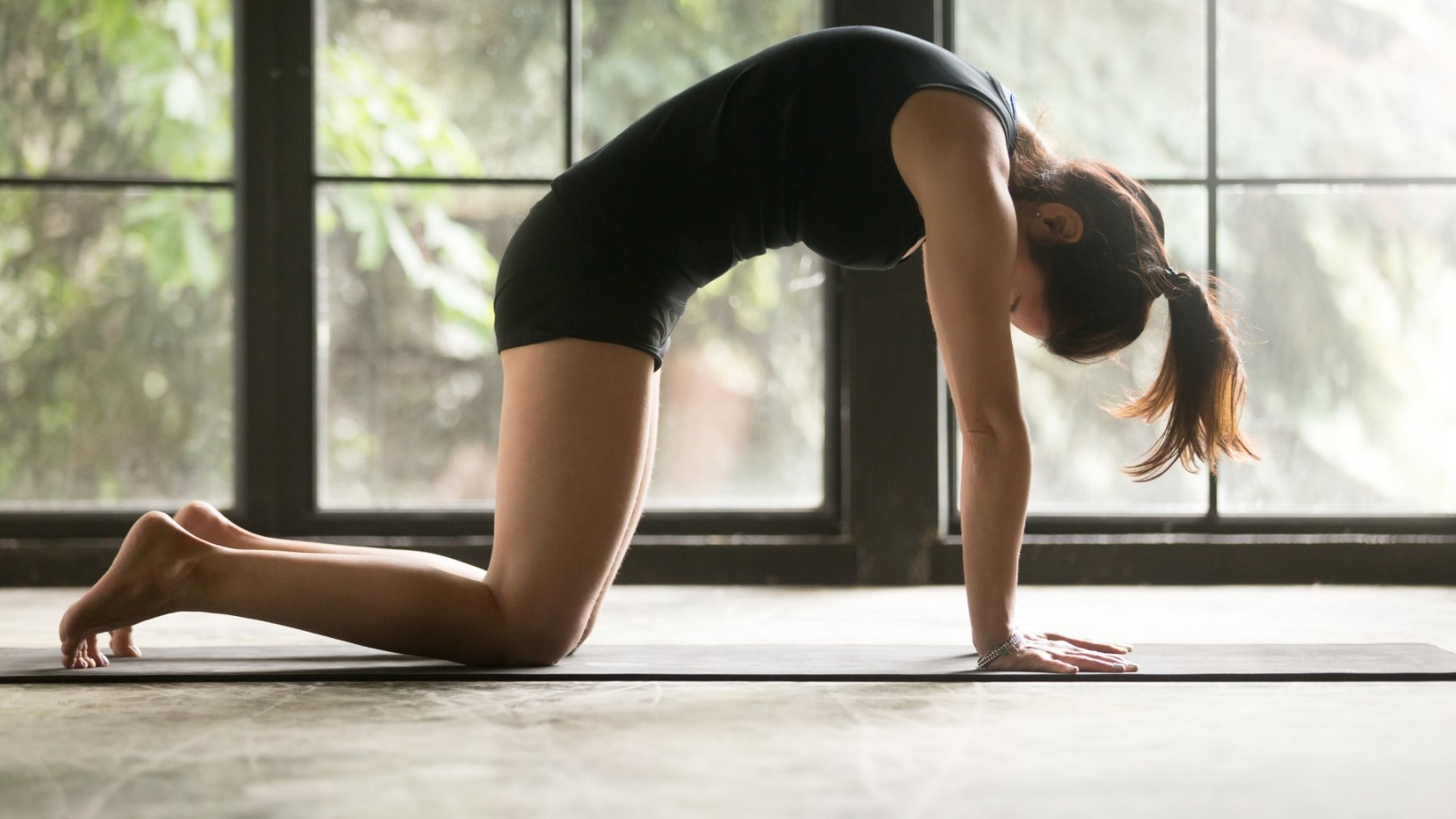
How we do it: Hands and knees on the floor. Wrists under the shoulders. Knees under the hips. Inhale, dip your navel down, pelvis tips forward, move your sternum forward and up. Neck long. Inhale, like a cow into Bitilasana.
Standing Forward Bend (Uttanasana)
This pose stretches the hamstrings, glutes and chest; and strengthens the hip flexors and spine.
Why we do it: This pose helps create length and space in the spine to counteract compression. This pose promotes calm and introspection.
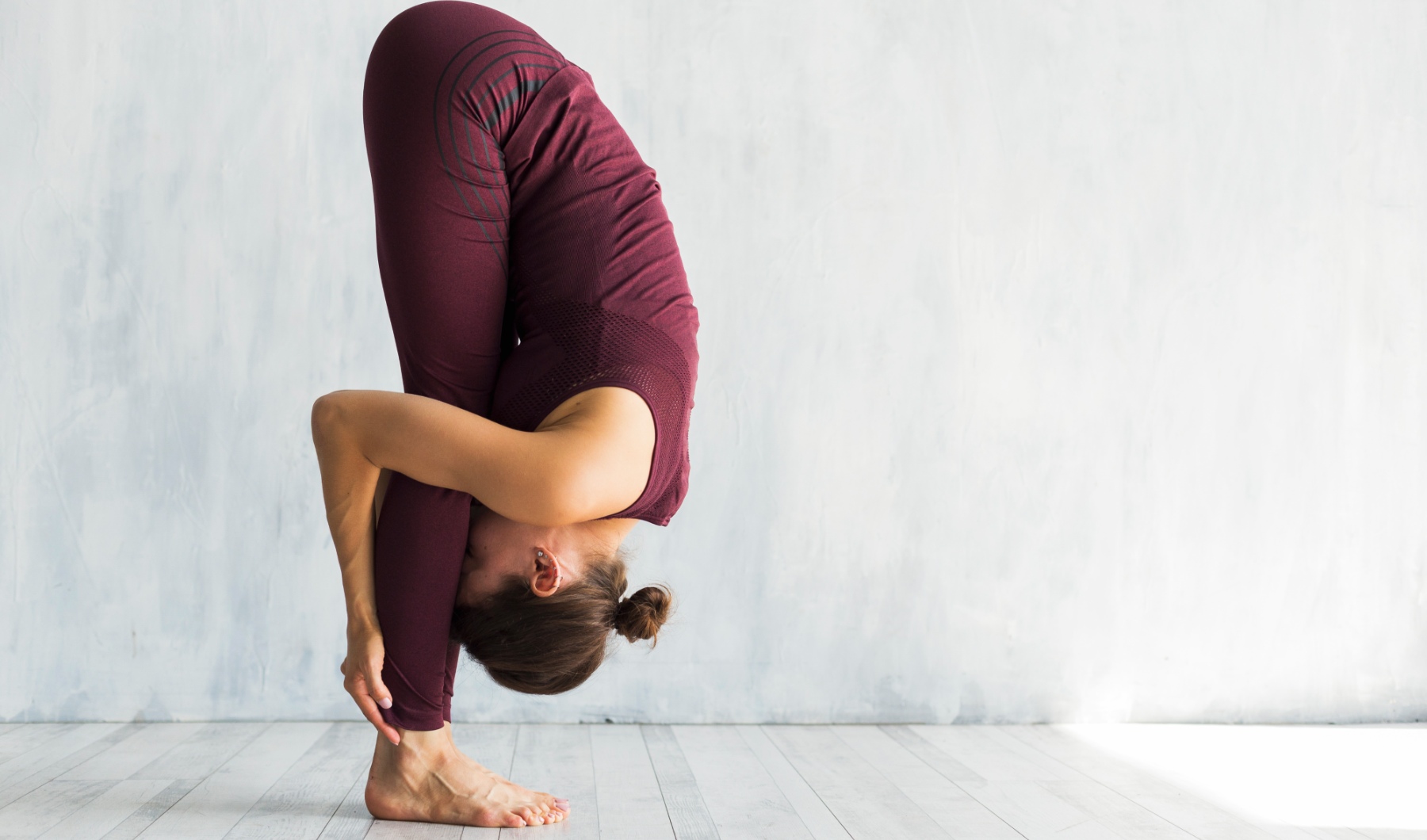
How we do it: Stand tall with your legs together. Nice and tall. Inhale and exhale. Nice and easy. Now again, inhale and exhale, one more time. Raise your arms above your head next to your ears. Feeling your center. You just have to inhale and exhale. Now bend forward from your hips, leading with your heart center. Make a straight line with your arms and upper body.
Child’s pose (Balasana)
It stretches the shoulders, upper, mid and lower back, glutes, hips, knees and ankles.
Why we do it: This poses relieves stress, anxiety and fatigue and alleviates back, shoulder and neck pain. It helps you to relax your body and calm your mind.
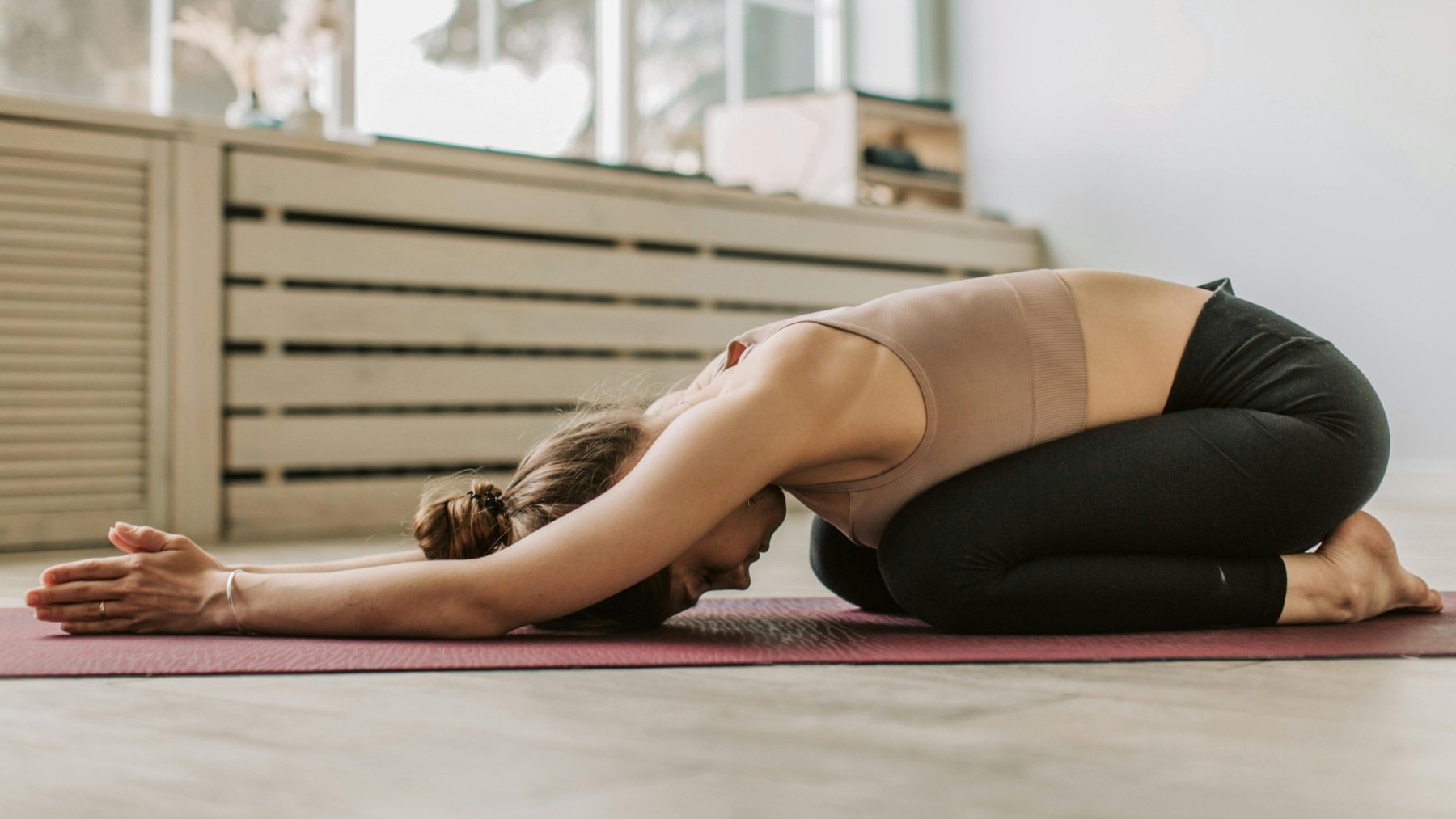
How we do it: Sit back on your heels. Inhale and exhale. Stretch your arms out in front of you. Even longer. Inhale and exhale. Lower your forehead to the floor. Relax. Keep breathing. Stay here as long as you need.
